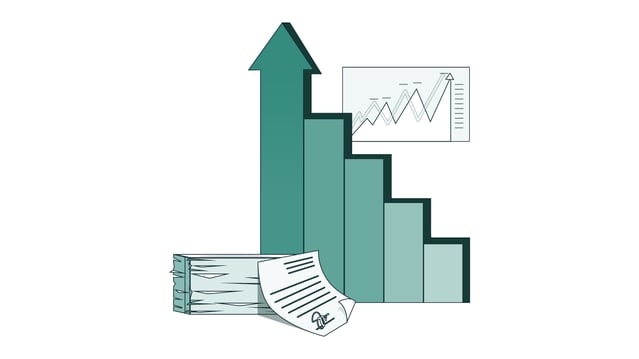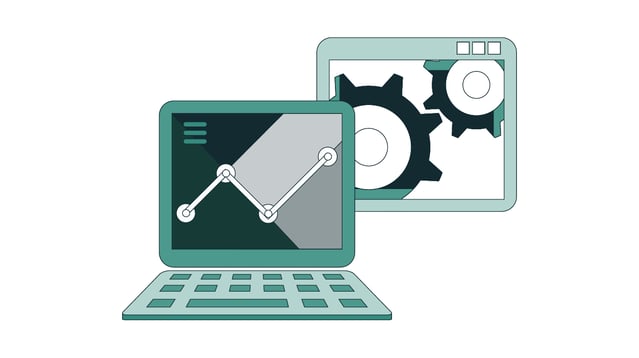Digital transformation is inevitable for any organisation that wants to embrace the agility and efficiencies that it can bring. But how many businesses are actually prepared to make this change? It is probably fewer than one might imagine.
The problem is it is not just about having the drive or even the expertise to achieve digital transformation. You also need to make sure your control functions are ready to support this change. This is why you need a plan for digital transformation in risk and compliance.
When companies rapidly scale up the numbers of agile teams, which is a necessity of embracing digital transformation, they need risk, compliance and other functions such as legal and cybersecurity to be able to keep pace. To achieve this, you have to successfully identify and mitigate the new risks involved at the same time as understanding the regulatory and compliance issues at play regarding your new ways of working.
This article explains why you need to act on embracing digital workflows and how to prepare the ground for a successful and smooth transition.
|
Table of Contents
|

What is digital risk and compliance management?
Digital risk and compliance management is the process of understanding the current and future risks to your organisation posed by its digital transformation – compliance issues that may not be at play now but will become relevant in the future.
This might be due to encountering new laws related to your digital enterprises or legislation in other territories that can now access your products or from where you can recruit remote talent.
With this being said, here are the definitions of digital risk management and digital compliance management:
| Digital risk management | Digital solutions to help you identify, evaluate and monitor risk factors related to digital transformation, such as cybersecurity risk and third-party risk. You harness automation to monitor risks, assess their current status and provide alerts for rising threat levels. |
| Digital compliance management | Digital solutions that target compliance-related challenges, automating processes to remove friction from workflows. This may include actions such as the preclearance of employee personal trades and automatic reminders to insiders to enter details on insider lists. |
What are the risks of postponing digital transformation?
Those members of the IT department who are driving digital change typically do so from an operational, efficiency and profit perspective. However, they might not be attuned to the potential risks of a digital transformation in risk and compliance, as that does not fall within their remit.
Where risk and compliance management do not embrace this digital future, there is no one there to spot the vulnerabilities of the new way of working. Your security and monitoring procedures might not work effectively in this disjointed environment, opening the door for compliance contraventions and other detrimental occurrences further down the road.

Action plan for digital transformation in risk and compliance
1. Strengthen communication
So often, departments run in silos, cut off from each other. This benefits no one and only leads to the sense that compliance and risk functions could fall further behind as the IT department strides forwards with its digital agenda.
In the first instance, compliance and risk teams should communicate as they most likely have common ground that could be of use to the other. Risk and compliance go hand-in-hand in a number of areas, and so collaboration could prove fruitful in mapping out the relevant operating models and compliance requirements.
It should also be encouraged that these departments reach out to other stakeholders who are already involved with the digital transformation process. This will most likely be the IT department in the first instance.
2. Get executive support
Chief information officers (CIOs) can be wary of dealing with compliance and risk teams for fear that they will interfere and slow down the work. But establishing a good relationship early on can help each party understand the rest and develop low-risk, compliant solutions for helping transform the business.
The IT department can lay out its vision for moving forward with the transformation and its plans on how to achieve its aims. Risk and compliance can then flag issues with the plan or at least predict potential problems and work to develop procedures that will keep the business compliant and working within its risk appetite.
It is not just the CIO that needs to be won over. Compliance and risk should work to communicate the importance of their input to the entire C-suite. Make sure they know you are not there to put the brakes on but rather to ensure that the digital transformation happens as smoothly as possible for the business.
3. Encourage proactiveness
You need to embed the risk and compliance assessments into the processes that make up the digital transformation from the start. This is a better approach than waiting to see what IT produces at the end of a major stage of the project and then tearing it apart due to its risk profile or compliance issues.
By adding experts to your agile teams in relevant areas of risk and compliance, you can ensure that the work begins with a proactive, rather than reactive, approach to risk. It seems like a more cautious route to transformation, but by using this shift-left approach, you increase the likelihood that the result of the project is more robust and requires fewer fixes.
There is a continual challenge relating to compliance, and that encourages more innovative thinking to overcome.
4. Enhance risk identification
The first step to risk identification is to tackle the new risks that digital transformation opens the business up to. If the risk function is not proactive in analysing these challenges, the business is effectively flying blind with its efforts to mitigate the issues that it could face in the future.
Spend time to assess all of the possible risks and then dive down into the data to really get to grips with what this new future could mean for your business. For example, cybersecurity is a risk area, but by itself, that is too vague. Think about what exactly that means for your business and compliance. It could lead to loss of trust, loss of confidentiality, sanctions for contravening data protection laws such as GDPR and so on. Embrace granular detail when considering new risks.

5. Automate controls
Automated risk assessment tools and compliance products are other ways to enhance the risk identification process. Especially as organisations grow and numbers of agile teams come into play, being able to utilise automation is essential for mitigating risk and improving compliance efforts.
You can monitor and test the risk requirements using automation, which frees up time for the risk function to complete its other tasks across the organisation.
Digital technologies can also be used to streamline compliance. Setting parameters for acceptable employee personal trades, for example, helps you to create a preclearance system in which it is very difficult for investment firm employees to make trades that could result in a conflict of interest with a client. A platform like TradeLog can speed up this process, relieving your compliance officers of the need to handle manual processes.
FAQs
What type of culture is needed for digital transformation?
The culture needed for successful digital transformation is one that provides support for employees to move forward with change, whilst also encouraging communication, particularly between departments. A collaborative approach is necessary for successful digital transformation.
What is the role of change management in digital transformation?
Change management is key to digital transformation, as the process requires a large shift in operations by its very nature. Change management guides the plans, implementation and then the monitoring processes of the transformation.
ConclusionCreating a plan for digital transformation in risk and compliance is necessary to encourage early communication and collaboration. It is easy for risk and compliance functions to appear as blocks, slowing down the progress of the business, but they play essential roles. By working together from the start and ensuring everyone understands their roles and requirements, you can embed good risk and compliance practices into your roadmap for the future.
Automating certain tasks helps with the smooth integration of compliance, as with TradeLog, the personal trade monitoring solution. It speeds up compliance and monitors for violations of your policy, alerting you before the issue becomes out of hand. Request a demo to find out more about how TradeLog can transform your business today. |
Related articles
-
New Governance solutions with AGM Voting Insight and ESG Data distribution
Read the article -
CSRD Reporting Requirements: A Comprehensive Guide
Read the article -
How to Tell a Powerful Equity Story (Step-by-Step)
Read the article
Share this post


